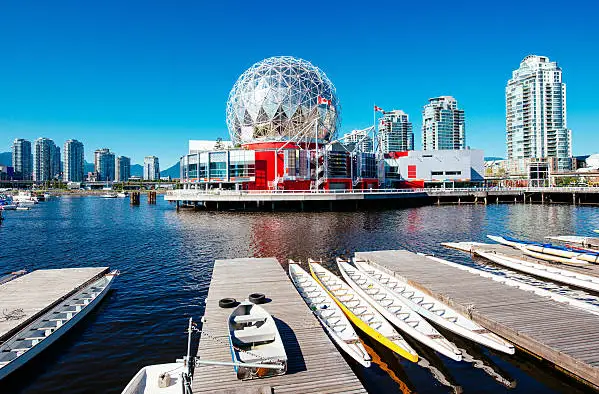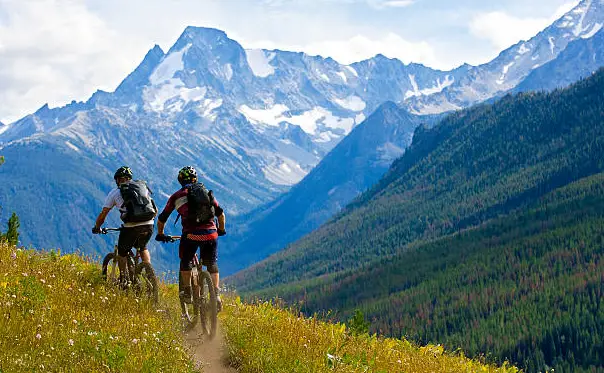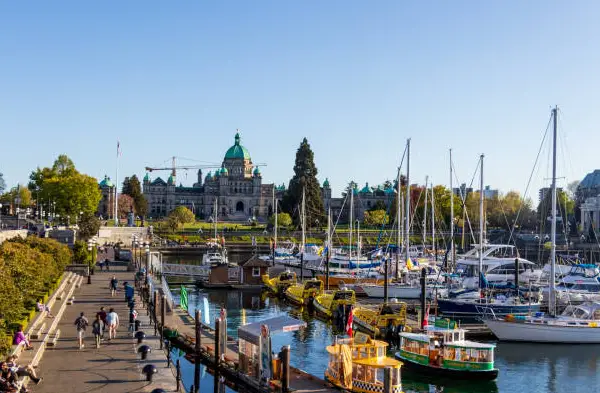Yes, Canada has a plethora of eco-friendly hiking trails that showcase the country's stunning natural beauty while prioritizing sustainability. From the Pacific Rim Trail in British Columbia to the Fundy Footpath in New Brunswick, these trails embrace environmentally conscious practices, allowing hikers to explore pristine landscapes with minimal impact. Many trails are designed to preserve biodiversity, promote Leave No Trace principles, and offer a greener way to connect with nature. If you are planning to go hiking in any Canadian Rockies, then we have curated the list of the best hiking trails in Canada.
Eco-friendly hiking is all about enjoying the outdoors while minimizing our footprint. And luckily, there are plenty of amazing eco-friendly hiking trails in Canada to choose from.

Here are a few of our favorites:
The West Coast Trail, Vancouver Island, British Columbia
This iconic 75-kilometer trail winds its way through ancient rainforests, along rugged coastlines, and over windswept beaches. It's a challenging hike, but the rewards are incredible. You'll see towering trees, spot whales and otters in the ocean, and camp under starry skies. To keep this trail eco-friendly, pack out all your trash, use designated campsites, and treat the wildlife with respect.
Read more: What Are The Major National Parks In Canada?
The Bruce Trail, Ontario

This is one of the most iconic hiking trails in Canada. This 890-kilometer trail stretches from Niagara Falls to Tobermory, passing through diverse landscapes like the Niagara Escarpment, Georgian Bay, and Manitoulin Island. It's a great choice for hikers of all levels, with sections ranging from easy day hikes to multi-day backpacking trips. The Bruce Trail Conservancy does an amazing job of maintaining the trail and promoting sustainable hiking practices.
Gros Morne National Park, Newfoundland and Labrador
This UNESCO World Heritage Site is home to some of the most unique geology in the world. Hike through fjords, climb dramatic peaks like Gros Morne Mountain, and explore Tablelands, a flat plateau that looks like it belongs on another planet. Parks Canada offers a variety of eco-friendly tips for visiting Gros Morne, such as using the park shuttle, conserving water, and respecting wildlife.
Read more: Where Can I Go For Birdwatching In Canada?
Algonquin Provincial Park, Ontario
This vast park is a haven for wildlife, with moose, wolves, and countless birds calling it home. Hike through forests of maple and pine, paddle across pristine lakes, and spot beavers building their dams. Algonquin Park is committed to sustainability, with programs to protect endangered species and conserve resources.
Kluane National Park and Reserve, Yukon
This remote park is home to Canada's highest mountain, Mount Logan, and boasts glaciers, ice fields, and stunning alpine meadows. Hike the King's Throne Trail for panoramic views, or explore the wilderness on multi-day backpacking trips. Kluane National Park is a prime example of responsible tourism, relying on solar power and encouraging visitors to pack out all their waste.
Read more: 10 Best Road Trips In Canada | Famous Road Trips To Canada
Iceline Trail (British Columbia)

Situated in Yoho National Park, the Iceline Trail traverses glaciers and alpine meadows. Parks Canada works to preserve the delicate alpine ecosystems and wildlife habitats in the area.
Skyline Trail (Nova Scotia)
The Skyline Trail is located in Cape Breton Highlands National Park and offers panoramic views of the Gulf of St. Lawrence. Parks Canada promotes sustainable practices to safeguard the park's ecological integrity.
These are just a few of the many amazing eco-friendly hiking trails in Canada. So lace up your boots, grab your reusable water bottle, and get ready to explore the great outdoors sustainably. Remember, leave no trace and take only memories!
Read more: How Can I Reduce My Environmental Impact While Traveling In Canada?
Additional tips for eco-friendly hiking:
Pack it in, pack it out. This means all your trash, including food scraps, peels, and even toilet paper.
Use a reusable water bottle and filter. This will save you money and reduce plastic waste.
Stick to designated trails. This helps protect fragile ecosystems and prevents erosion.
Be mindful of wildlife. Keep your distance, don't feed the animals, and never leave food unattended.
Respect the local culture and traditions. Ask permission before taking photos of people or sacred sites.
By following these simple tips, we can all help keep Canada's hiking trails healthy and beautiful for generations to come.
